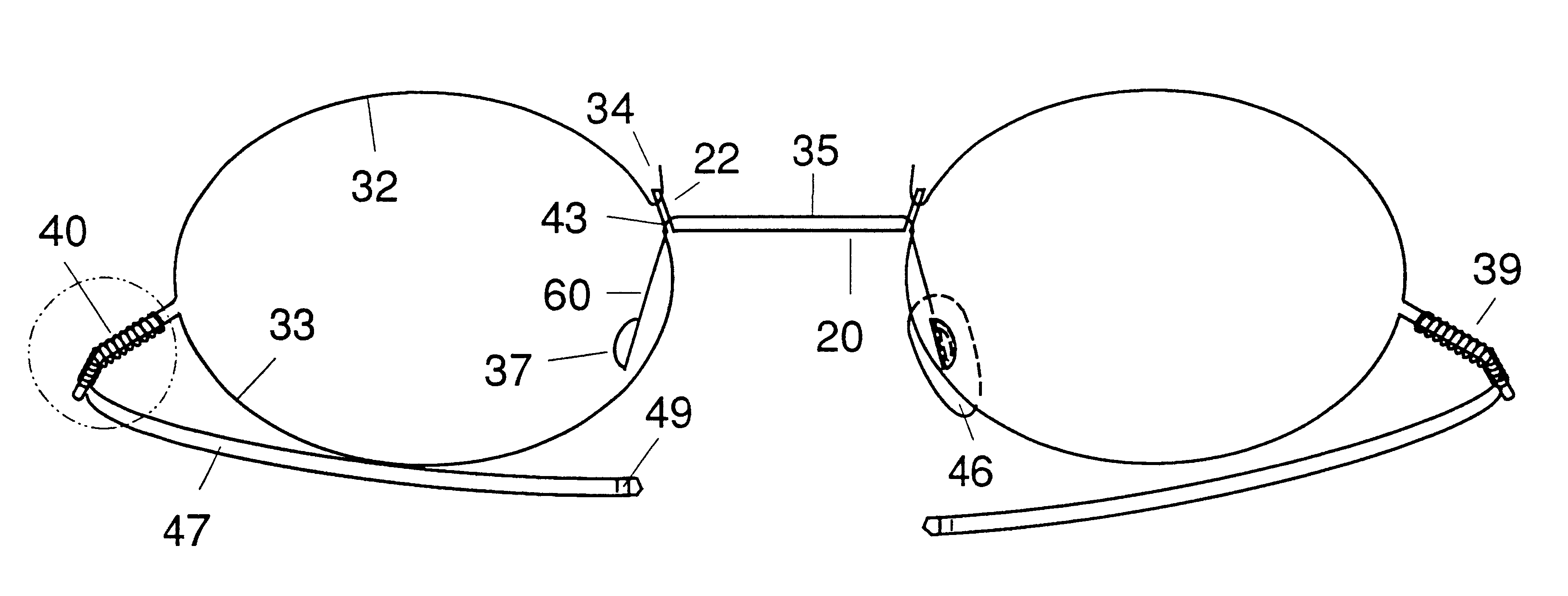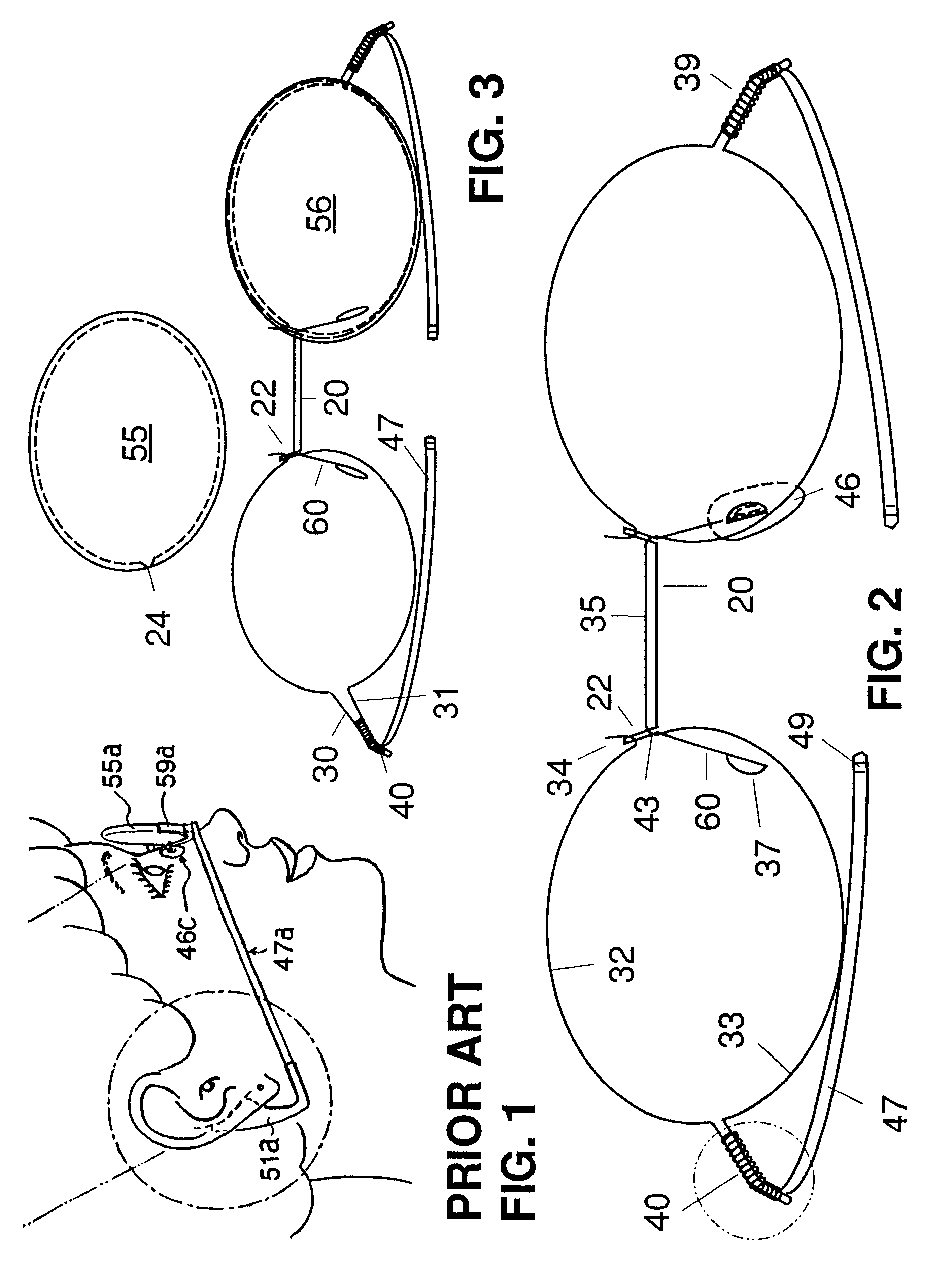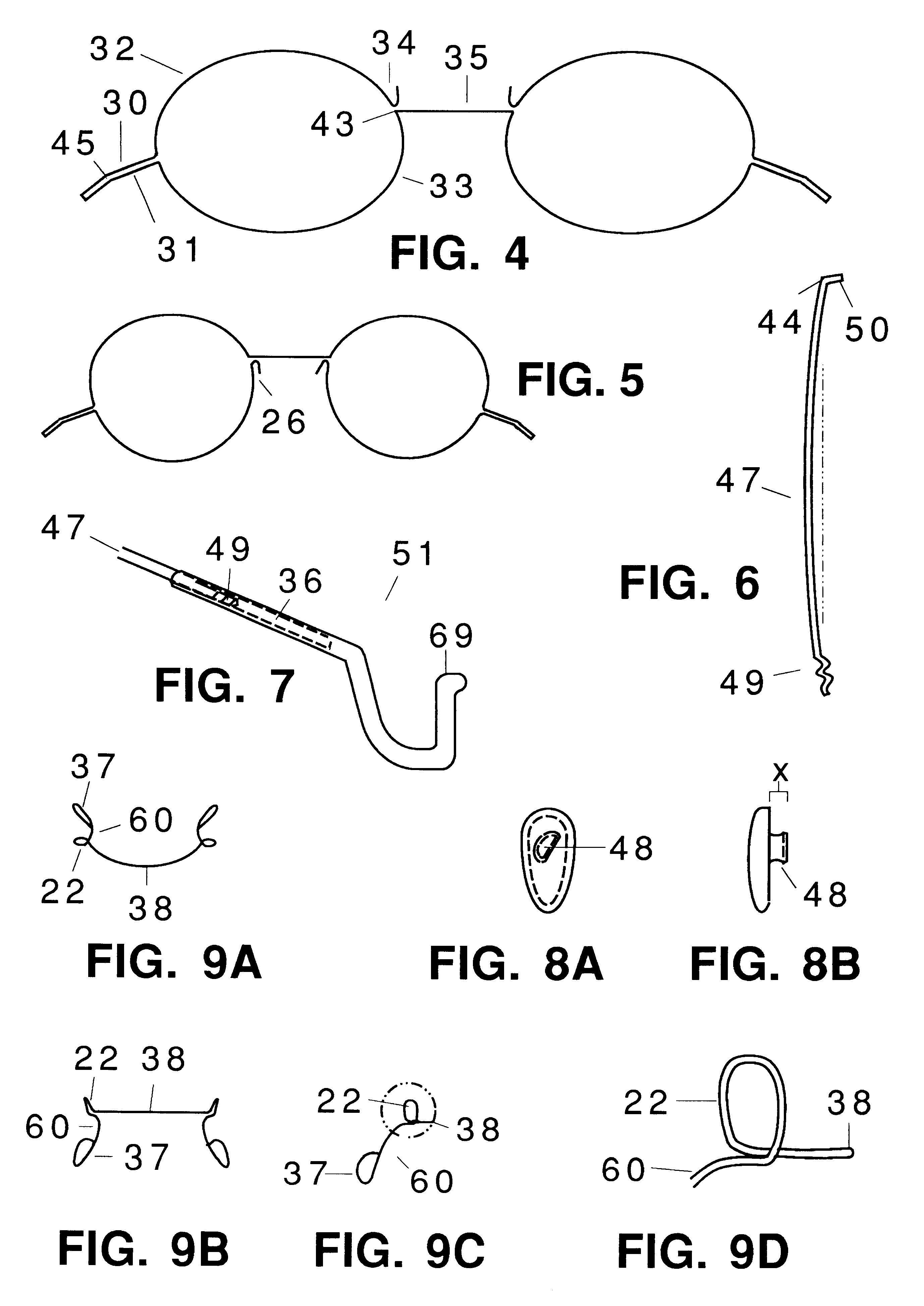Wire-frame eyewear assembly with transversely-lithe sidepiece element
a technology of sidepiece elements and wire frames, which is applied in the direction of spectacles/goggles, spectacles/goggles, instruments, etc., can solve the problems of increasing the weight of the frame, adding expense and brazing difficulty, and parts near the brazing must remain larg
- Summary
- Abstract
- Description
- Claims
- Application Information
AI Technical Summary
Benefits of technology
Problems solved by technology
Method used
Image
Examples
Embodiment Construction
FIG. 1 is Prior Art shown in Pat. No. 5,859,684, FIG. 14, where the embodiment of that system is shown on a wearer; RHS (right-hand side) view. Notations are ear-rest 51a, sidepiece 47a, nosepad 46c, RHS lense 55a, and frame 59a. These part names are used in this text.
FIG. 2 shows an eyewear assembly of the invention's parts, front view. In this embodiment, upper portion RHS frame eyewire 32 terminates medially in frame hook 34. The medial end of lower portion RHS frame eyewire 33 becomes frame bridge 35 at frame bow 43 (43 is shown better in FIG. 4.) Hook 34 and bow 43 are semi-encircled by nosebridge hook 22. Nosebridge bridgeportion 20 positions under frame bridge 35 (but can continue frontwardly / upwardly around frame bridge). A lateral edge of bridgeportion 20 ovals upwardly to rearwardly to downwardly as hook 22. After hook 22, the nosebridge continues rearwardly / downwardly as nosebridge nosepad arm 60. Also angling arms laterally can help slant nosepads, when added, to tailor ...
PUM
 Login to View More
Login to View More Abstract
Description
Claims
Application Information
 Login to View More
Login to View More - R&D
- Intellectual Property
- Life Sciences
- Materials
- Tech Scout
- Unparalleled Data Quality
- Higher Quality Content
- 60% Fewer Hallucinations
Browse by: Latest US Patents, China's latest patents, Technical Efficacy Thesaurus, Application Domain, Technology Topic, Popular Technical Reports.
© 2025 PatSnap. All rights reserved.Legal|Privacy policy|Modern Slavery Act Transparency Statement|Sitemap|About US| Contact US: help@patsnap.com



